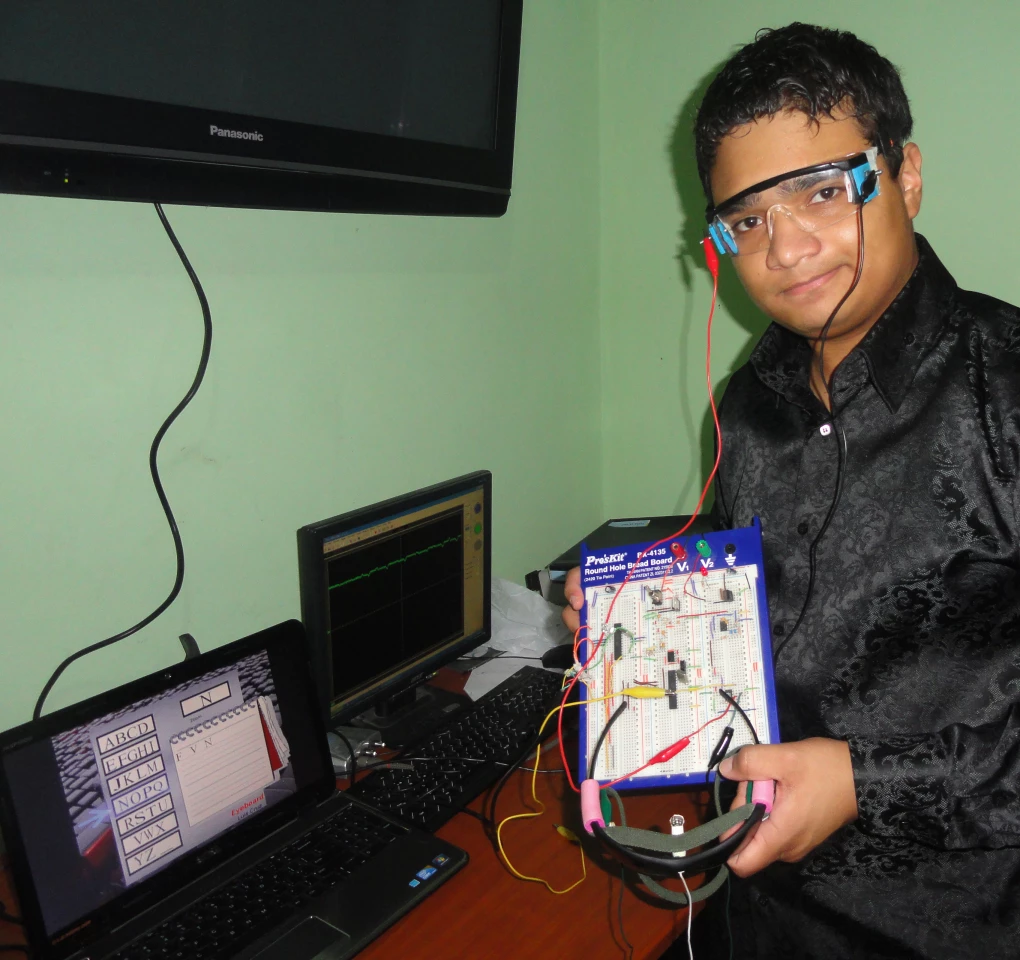This unique and worthwhile project was put together by a 17-year-old electronics and programming whiz from Honduras, of all places. The Eyeboard system is a low-tech eyeball-tracking device that allows users with motor disabilities to enter text into a computer using eye gestures instead of a physical interface. This kind of system is not unique - there's plenty of eye tracking interfaces out there - but Luis Cruz has figured out a way to build the full system into a set of glasses for less than US$300, putting easier communication within reach of users in developing countries. He's also releasing the software as open source to speed up development. Personally, I spent my year as a 17-year-old in a series of heroic failures trying to impress girls with my air guitar.
Tracking eyeball movements is far from a new science - in fact, people have been studying eye movements for more than 130 years. Early on, the main focus was on understanding how the process of reading works - the way the eyes skip and dart across rows of text to take in written information. Congratulations, you're now aware that your eyes are jumping from word to phrase to word as you read this article!
While eyeball tracking used to be achieved using painstaking manual mapping of direct observations, more recent technologies have made it much easier and more precise. High-tech contact lenses, for example, can now be used to map and record eye movement to provide data that's used in everything from driver training to sports development to gaming, virtual reality and medical research. Still, the dominant commercial application by far is in advertising and usability - working out how different designs steer the eye towards a final goal most effectively.
But for people with certain motor disabilities, particularly those who don't have good control over their hands or voices, eye tracking can take on a much more important role, as a hands-free computer interface that can be a fantastic aid to communication, and a much easier alternative than the head wand or mouth stick, which are used to tap on a keyboard.
Unfortunately, eyeball tracking computer interfaces have proven to be quite expensive on the market - anywhere from several thousand to more than US$10,000 when combined with software. This puts them out of reach of many affected people, particularly in developing countries where that sort of money could represent several years of average earnings.
And that's where 18-year-old Honduran high school student Luis Cruz is stepping in. Two years ago, Cruz indulged his love of electronics and software tinkering by building a video game system - but in the last 12 months he's turned his focus to far less teenage pursuits.

Cruz has spent the last year building and developing an eye tracking computer interface that works on the principles of electrooculography - that is, measuring the resting potential of the retina using electrodes placed just beside the eyes.
As it turns out, the human eye is polarized - the front of the eye carries a positive charge and the rear of the eye has a group of negatively charged nerves attached to the retina. So when the eye is moved, you can use electrodes to measure the change in the dipole potential of the eye through the skin.
It's a fairly lo-fi input - it doesn't track eye movements with anywhere near the accuracy of a high tech contact lens or video tracking system - but on the other hand, it's extremely cheap, and so uninvasive that Cruz has managed to mount the electrodes in a pair of sunglasses. And it's good enough at tracking macro eye movements to allow the next phase of the project: the computer interface software.

Although Cruz's sensor glasses can only track horizontal eye movements at this stage, he's developed a piece of software that takes those inputs and uses them to choose letters in a grid, so that users can type entire words using just their eye motions.
The Eyeboard system is still in a fairly embryonic state at this stage, but Cruz believes the hardware can be produced cheaply - as in, his prototypes cost somewhere between US$200-300 for a set of glasses - and he's releasing the software as open source to enable quicker development of tools like autocomplete which will make users' communication even quicker and more fluid. Here's a little more about the effectiveness of electrooculography in computer interfaces.
Clearly, this is a kid with some serious drive - check out his technical documentation for a closer look at the project. If anyone feels like giving Cruz a helping hand, he's looking for PayPal donations to help him towards a college education in America. Given how much he's achieved in Honduras at such a young age, his potential and motivation is clear, even if his home country doesn't afford a lot of opportunities.
We wish Cruz the best of luck and hope to see the Eyeboard project develop into something that can help the disabled community in Honduras and around the world.
What were YOU doing when you were 17?
UPDATE 23/11/2011: The project has now been launched on Kickstarter in an effort to raise funds to bring the Eyeboard to market.



